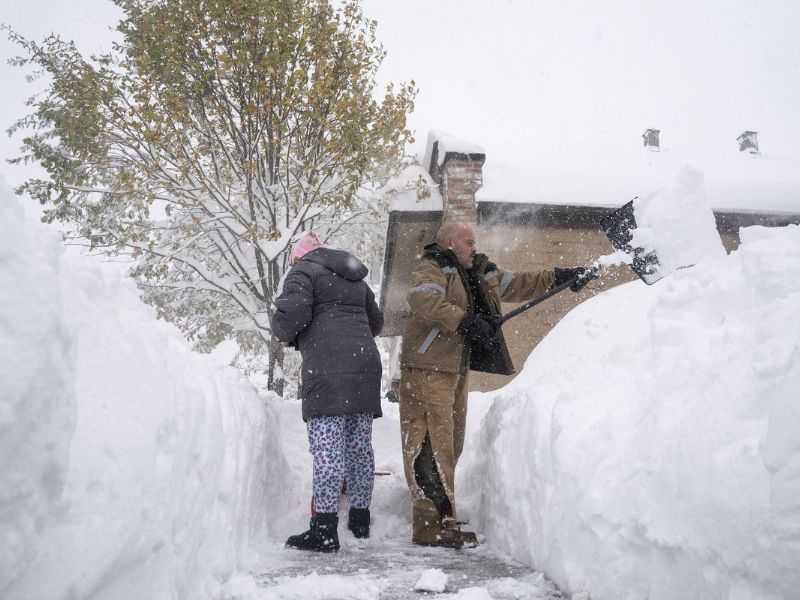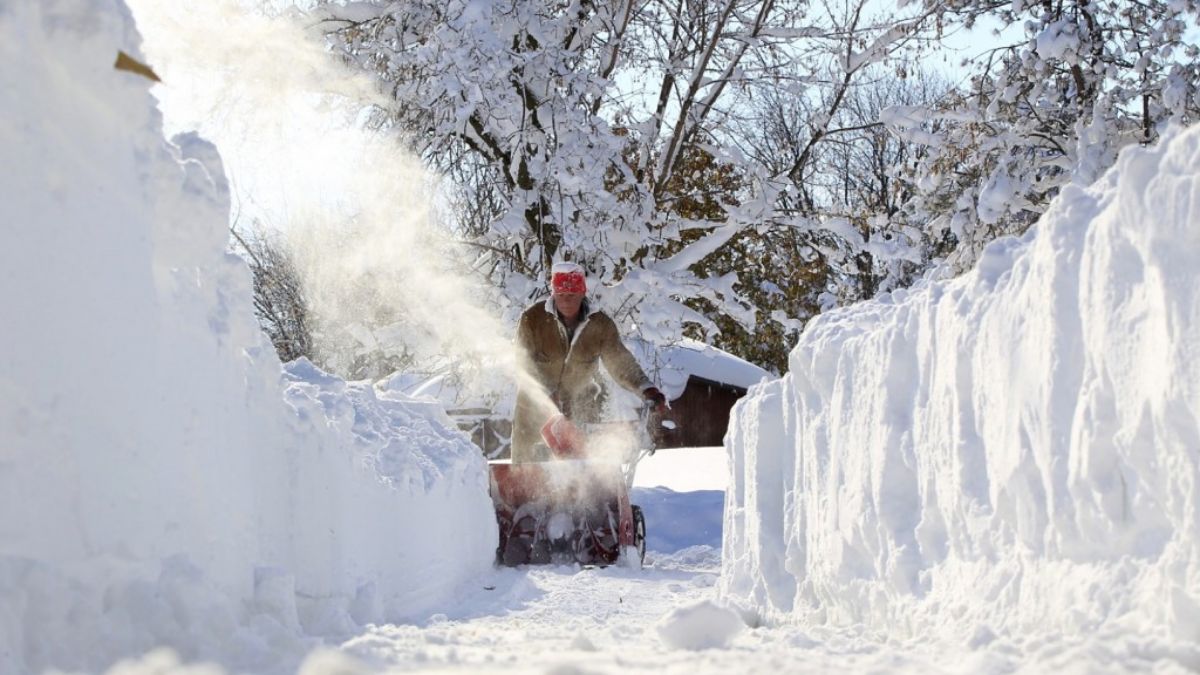Yes, it does snow in Buffalo, New York. The city is known for its significant snowfall and is often associated with heavy winter weather. Buffalo’s proximity to Lake Erie makes it susceptible to lake-effect snow, a meteorological phenomenon that occurs when cold air passes over the warmer waters of the Great Lakes, resulting in intense snowfall downwind of the lake.
However, it is important to note that snowfall amounts can vary from year to year. The city has developed effective snow management strategies to cope with winter weather, including snow removal plans and infrastructure maintenance.
Despite the challenges, Buffalo has embraced its snowy climate and offers various winter sports and recreational activities for residents and visitors to enjoy.

Buffalo, New York, is often associated with heavy snowfall and frigid winter weather. Its reputation as a snowy city precedes it, but what is the truth behind this perception? In this article, we delve into the climate of Buffalo and explore whether it truly lives up to its snowy reputation.
Location Overview
Buffalo, New York, is located in the western part of the state, near the eastern shores of Lake Erie. It is the second-most populous city in New York after New York City and serves as the county seat of Erie County.
Situated about 20 miles from the Canadian border, Buffalo is part of the Buffalo-Niagara Falls metropolitan area. The city lies at the eastern end of Lake Erie, one of the five Great Lakes of North America.
Buffalo’s location also positions it as a major transportation hub, connecting the United States and Canada. The city is served by several highways, including Interstate 90, and has an international airport, the Buffalo Niagara International Airport.
Buffalo’s strategic location on the eastern shores of Lake Erie has played a crucial role in its history and development. The city has a rich industrial heritage and was once a major center for manufacturing, particularly in steel production and automobile manufacturing.
Overall, Buffalo’s location offers a blend of natural beauty, proximity to the Great Lakes, and easy access to both the United States and Canada, making it an important city in the northeastern region of the United States.
Geography and Climate of Buffalo
Buffalo, New York’s snowfall patterns are heavily influenced by its geographical location and climate. Situated on the eastern shores of Lake Erie, Buffalo experiences significant snowfall due to the phenomenon known as lake-effect snow.
Cold air masses passing over the warmer waters of the lake pick up moisture, leading to intense snowfall when they reach the colder land. The city’s proximity to the Great Lakes and its continental climate characterized by cold winters contribute to its reputation as a snowy city.
On average, Buffalo receives around 94 inches of snow annually, with localized snow belts and frequent snowstorms. These geographical and climatic factors make Buffalo one of the snowiest cities in the United States.
Historical Snowfall Record
Buffalo, New York, has a rich history of notable snowfall events and record-breaking snowstorms. One of the most remarkable snowfall records occurred in November 2014 when the city experienced a historic storm.
Over the course of just a few days, more than 7 feet of snow blanketed the region, paralyzing the city and surrounding areas. This extreme event resulted in widespread travel disruptions, road closures, and challenges for residents.
The 2014 snowstorm stands as a prominent example of the immense snowfall Buffalo is capable of receiving in a short period. While such extreme events are relatively rare, they highlight the city’s vulnerability to heavy snowfall and its need for effective snow management strategies.
Winter Season & Snowfall Pattern
Buffalo has a long-standing reputation for experiencing significant snowfall each year. The city’s proximity to the Great Lakes, particularly Lake Erie, plays a crucial role in its snowfall patterns.
Lake-effect snow is a meteorological phenomenon that occurs when cold air masses pass over warmer bodies of water, such as the Great Lakes. This results in intense snowfall downwind of the lake.
When strong winds blow across Lake Erie, they pick up moisture, which freezes and falls as snow when it reaches the colder landmass. This phenomenon can result in localized bands of heavy snowfall, known as snow belts, which can deposit large amounts of snow in a short period.
Locations to Enjoy Snow
Buffalo, New York, offers several locations where residents and visitors can enjoy the snowy winter season. Here are some popular spots:
- Delaware Park
Located in the heart of Buffalo, Delaware Park transforms into a winter wonderland during snowy months. The park’s expansive grounds provide ample space for activities like sledding, snowshoeing, and cross-country skiing.
- Chestnut Ridge Park
Chestnut Ridge Park offers various winter activities just south of Buffalo in Orchard Park. The park features groomed trails for cross-country skiing and snowshoeing and slopes for sledding and tobogganing.
- Niagara Falls State Park
While primarily famous for its stunning waterfalls, Niagara Falls State Park also offers winter attractions. Visitors can witness the frozen beauty of the falls and enjoy snow-covered trails for hiking and winter photography.
- Kissing Bridge
Kissing Bridge is a popular ski resort located approximately 40 minutes southeast of Buffalo in Glenwood. It offers downhill skiing and snowboarding slopes suitable for all skill levels. The resort also provides equipment rentals and lessons for beginners.
- Canalside
Buffalo’s Canalside area, located along the Buffalo River and Erie Canal Harbor, offers a range of winter activities. Visitors can go ice skating on the outdoor rinks, participate in curling, or simply enjoy the scenic views while sipping hot chocolate.
- Tifft Nature Preserve
Tifft Nature Preserve provides a serene winter experience in Buffalo. This urban nature reserve offers peaceful trails for winter walks and birdwatching amidst snow-covered landscapes.
These are just a few examples of the many locations in and around Buffalo where you can embrace the snowy season and partake in various winter activities.
Factors Influencing Snowfall
Several factors contribute to the snowfall patterns in Buffalo, New York. The primary influence is the city’s proximity to Lake Erie, which leads to the phenomenon known as lake-effect snow.
The prevailing wind patterns and temperature differentials play crucial roles in determining the extent and intensity of lake-effect snow in Buffalo. Additionally, the city’s continental climate with cold winters provides a favorable environment for snowfall.
Other atmospheric conditions, such as storm systems and frontal boundaries, can also impact snowfall amounts. Collectively, these factors contribute to the significant snowfall experienced in Buffalo and its reputation as a snowy city.
Conclusion
Buffalo is indeed a city that experiences significant snowfall due to its proximity to Lake Erie and the phenomenon of lake-effect snow. The annual snowfall averages in Buffalo are among the highest in the United States, with snowstorms occasionally bringing record-breaking accumulations.
However, Buffalo has learned to adapt to its snowy reputation, turning it into an opportunity for winter sports and recreation while effectively managing the challenges of heavy snowfall. So,yes, it does snow in Buffalo, and the city has embraced its wintry climate as part of its unique identity.
